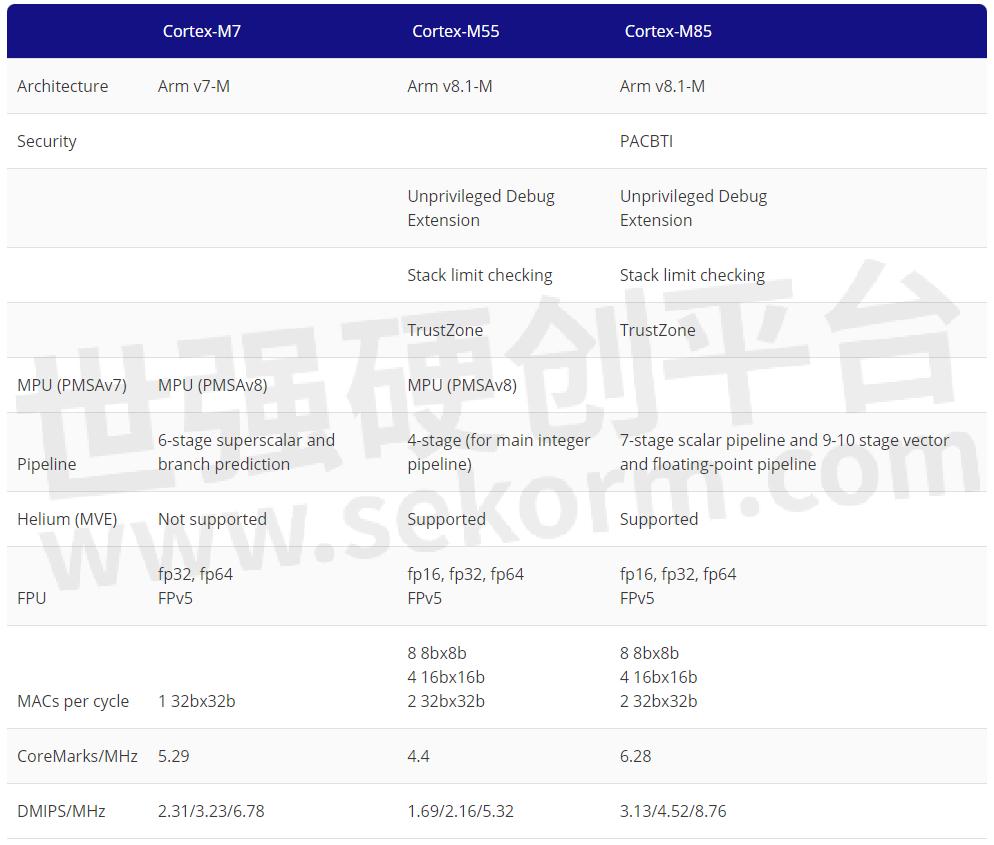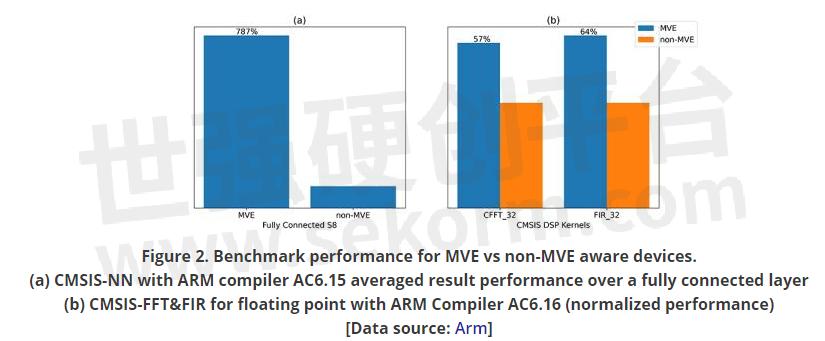Leveraging Helium and ARM® Cortex®-M85 for Unprecedented DSP and AI Performance on an MCU Core

Introduction
In the world of embedded devices, there's a growing demand for advanced machine learning and signal processing capabilities. ARM® Cortex®-M85, the latest general-purpose core, aims to meet these demands with its 32-bit Armv8.1-M architecture, offering high performance and power efficiency. The MCU core's Helium technology, M-profile vector extension (MVE), provides significant uplift for ML/DSP applications (4x ML performance and 3x DSP performance vs. Cortex-M7).
Helium-MVE
Helium technology is a microarchitecture extension for Cortex-M85 and Cortex-M55 cores, designed to replace lower to mid-tier DSP cores with on-chip processing. Helium consists of eight 128-bit vector registers and supports a wide range of vector data types for various applications. Features such as overlapping pipelines, improved branch prediction, and looping optimization contribute to its performance. In addition, enhanced memory access instructions and support for complex value processing make Helium a powerful addition to Cortex-M85.
Cortex-M85 Features
Cortex-M85 outshines other Cortex-M cores with a wealth of features, including enhanced security options like pointer authentication, branch target identification (PABTI), and unprivileged debug extensions (DUE). The core also offers a 7-stage scalar pipeline and 9-10 stage vector and floating-point pipeline, with support for various data types. A detailed comparison of features between the top 3 high-end ARM microcontroller cores is illustrated below.
Table 1. Comparison between CM7 vs CM55 vs CM85

Benchmarks
Cortex-M85 achieves significant performance uplifts compared to other Cortex-M cores, outperforming Cortex-M7 in AI/ML performance by 4 times and Cortex-M55 by 20%.

Empirical data indicates that Helium technology improves the performance of some ML kernels by up to 787%, and up to 57% and 64% for fast Fourier transform and finite impulse response for floating points data types, respectively. However, do note that since Helium natively supports multiple data types, the performance uplift would be significantly higher in those instances, as will be shown in 2nd part of this blog series.

In conclusion, the Cortex-M85 with Helium can contribute to a significant uplift in AI/ML and DSP performance while outshining the rest of the Cortex-M cores in scalar performance. This makes it an ideal choice for more complex processing tasks. Stay tuned for the second part of this blog series, where we will discuss the AI demos showcased by Renesas Electronics at Embedded World 2023 and how CM85 performed in real-life applications.
- +1 Like
- Add to Favorites
Recommend
- Silicon Labs Expands MCU Platform with a 50MHz Core Frequency New BB5 8-bit MCU Family
- New MCU RL78/G23 Operates with 30% Lower Power Consumption than The Conventional MCU
- Renesas Extends RA MCU Family with RA6T1 MCU Group for Motor Control and AI-based Endpoint Predictive Maintenance
- Using Example Projects to Support RA MCU Designs
- Renesas Expands Low-Power Industrial and IoT Applications Reach With New RA4M2 MCU Group in Arm Cortex-Based MCU Family
- Renesas Extends Arm Cortex-Based MCU Family with RA4M3 MCU Group for Industrial and IoT Applications
- Renesas Strategic Partners Presented Many of the RX MCU Solutions at ET & IoT Expo 2021
- Easy Expansion of MCU Code Area! Introducing Example of Program Execution from Serial ROM Using QSPI XIP Mode
This document is provided by Sekorm Platform for VIP exclusive service. The copyright is owned by Sekorm. Without authorization, any medias, websites or individual are not allowed to reprint. When authorizing the reprint, the link of www.sekorm.com must be indicated.





























































































































































































































































































































































































































































































































































































































































































































































































































